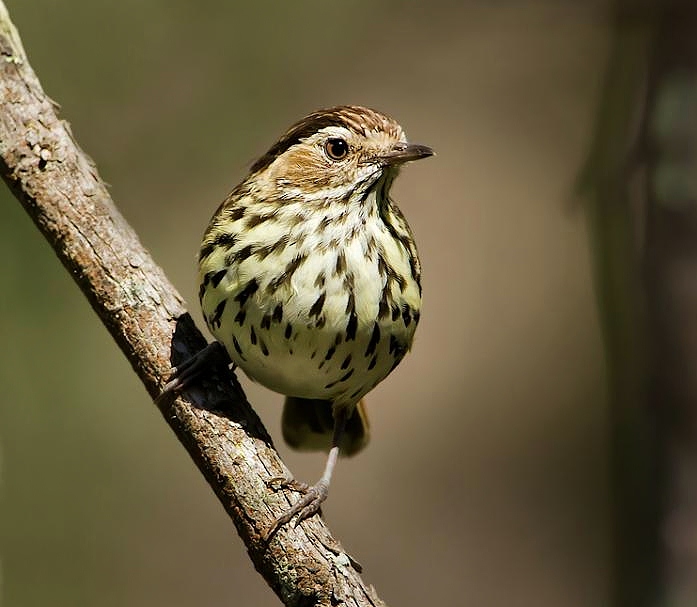 |
| Photo by Ian Colley (Internet Bird Collection) |
Common name:
speckled warbler (en); acantiza-malhada (pt); séricorne fléché (fr); sedosito moteado (es); grundhuscher (de)
Taxonomy:
Order Passeriformes
Family Acanthizidae
Range:
These birds are endemic to south-eastern Australia, being found from south-western Victoria to central Queensland, mostly on the slopes and tablelands of the Great Dividing Range.
Size:
The speckled warbler is 13 cm long and weighs around 13 g.
Habitat:
These birds are mostly found in temperate forests, namely in Eucalyptus, but also in dry scrublands, grasslands and rocky areas.
Diet:
The speckled warbler forages on the ground, eating both seeds and insects.
Breeding:
They can breed all year round, but with a peak in September-November. The nest is a domed structure with a side entrance, made of dry grass and strips of bark. It is located in a slight hollow on the ground or at the base of a low thick plant. There the female lays 3-4 glossy red-brown eggs which are incubated by both parents for 17 days. The chicks are fed by both parents and fledge 19 days after hatching.
Conservation:
IUCN status – LC (Least Concern)
This species has a very large breeding range and the global population is estimated at 400.000 individuals. This population is in decline owing to ongoing habitat destruction and degradation and the effects of introduced plants and predatory mammals.







